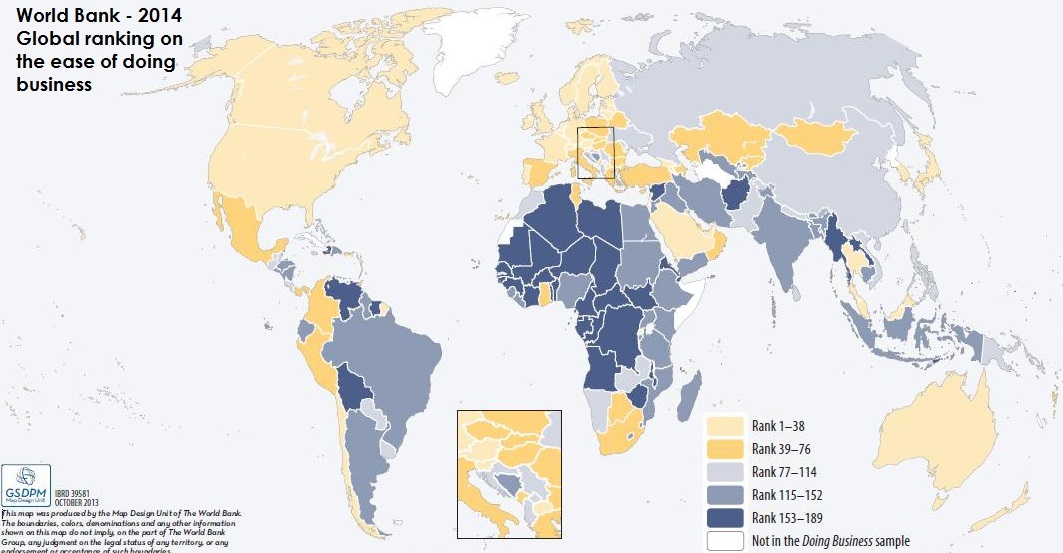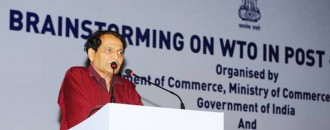
India’s new Foreign Trade Policy 2014-19: Why not have more IIFTs?
Bidhu Bhushan Palo | @TheDollarBiz  Change is in the air, they say. I too see that the spotlight is suddenly on the export sector, a definite focus on mercantilism. Is this a revisit to 1991 when India liberalized its economy as a last resort, but a step that helped India survive and then get noticed as a major economy? I definitely hope so. It would be wonderful to see India’s economy gallop and exports could play a major part in it, doing what the IT and BPO sectors have done for over a decade now. But are we doing enough? It is great to see Prime Minister Narendra Modi speak from the ramparts of the Red Fort, urging the country’s youth to manufacture goods that are being imported now with an aim to export the products in future. However, it is actually akin to building castles in the air. India faces multiple challenges and must rejig its entire economic policy to make it happen and the HRD minister has a major role to play. An expert tells me that a manufacturer has to get clearances from over 15 government agencies to just begin and run a production unit in India. To export goods, he has to add at least 5 more agencies on the list. Plus, the risks multiply when it comes to exports and if he does not get paid by the overseas buyer (foreign earnings!), around 20 agencies including the Enforcement Directorate (ED) begin enquiries. Talks of single window clearances sound hollow when that one window has several others inside. No wonder India’s position has slipped three points to 134 in the “2014 Ease of Doing Business” rankings by the World Bank. Can India become a manufacturing and export hub without a new generation of exporters?
Change is in the air, they say. I too see that the spotlight is suddenly on the export sector, a definite focus on mercantilism. Is this a revisit to 1991 when India liberalized its economy as a last resort, but a step that helped India survive and then get noticed as a major economy? I definitely hope so. It would be wonderful to see India’s economy gallop and exports could play a major part in it, doing what the IT and BPO sectors have done for over a decade now. But are we doing enough? It is great to see Prime Minister Narendra Modi speak from the ramparts of the Red Fort, urging the country’s youth to manufacture goods that are being imported now with an aim to export the products in future. However, it is actually akin to building castles in the air. India faces multiple challenges and must rejig its entire economic policy to make it happen and the HRD minister has a major role to play. An expert tells me that a manufacturer has to get clearances from over 15 government agencies to just begin and run a production unit in India. To export goods, he has to add at least 5 more agencies on the list. Plus, the risks multiply when it comes to exports and if he does not get paid by the overseas buyer (foreign earnings!), around 20 agencies including the Enforcement Directorate (ED) begin enquiries. Talks of single window clearances sound hollow when that one window has several others inside. No wonder India’s position has slipped three points to 134 in the “2014 Ease of Doing Business” rankings by the World Bank. Can India become a manufacturing and export hub without a new generation of exporters?  In all this, lack of knowledge and information is perhaps a major bottleneck which is often overlooked. In a recent seminar held by the Federation of Indian Exporters Organisation (FIEO), it was pointed out that the three challenges for new exporters are lack of knowledge, finance and competitiveness. So what’s being done? Regarding finance, it is hoped that the government may make export credit a Priority Sector Lending (PSL) for banks in the practical sense (Read: Making exports a Priority Sector will strengthen economy, says FIEO President). However, the other two are closely linked with education and training. More Indian Institutes of Foreign Trade (IIFTs) could not only help boost India’s exports but also help develop sound trade policies. Having at least one IIFT in each metro city could be a beginning. Having a syllabus (such as Mumbai University’s Export Marketing Paper in B.Com), which is contemporary and useful, in all universities and introducing concepts in schools (perhaps as an alternative for those students who do not want to study college-level Science and Mathematics in the garb of IIT foundation) is another step. And introducing Foreign Trade in Industrial Training Institutes (ITIs) could provide the much needed support that Indian export houses need now and are likely to need more in future. We will have to wait for the new Foreign Trade Policy to see whether this happens. Meanwhile, is there anything available for wannabe and new exporters? FIEO is perhaps the only organisation that conducts regular training programs for such aspirants. And it is heartening to see a section in the FIEO website saying: “How to start export business”. It is another matter that the only information available on the page is "coming soon"!
In all this, lack of knowledge and information is perhaps a major bottleneck which is often overlooked. In a recent seminar held by the Federation of Indian Exporters Organisation (FIEO), it was pointed out that the three challenges for new exporters are lack of knowledge, finance and competitiveness. So what’s being done? Regarding finance, it is hoped that the government may make export credit a Priority Sector Lending (PSL) for banks in the practical sense (Read: Making exports a Priority Sector will strengthen economy, says FIEO President). However, the other two are closely linked with education and training. More Indian Institutes of Foreign Trade (IIFTs) could not only help boost India’s exports but also help develop sound trade policies. Having at least one IIFT in each metro city could be a beginning. Having a syllabus (such as Mumbai University’s Export Marketing Paper in B.Com), which is contemporary and useful, in all universities and introducing concepts in schools (perhaps as an alternative for those students who do not want to study college-level Science and Mathematics in the garb of IIT foundation) is another step. And introducing Foreign Trade in Industrial Training Institutes (ITIs) could provide the much needed support that Indian export houses need now and are likely to need more in future. We will have to wait for the new Foreign Trade Policy to see whether this happens. Meanwhile, is there anything available for wannabe and new exporters? FIEO is perhaps the only organisation that conducts regular training programs for such aspirants. And it is heartening to see a section in the FIEO website saying: “How to start export business”. It is another matter that the only information available on the page is "coming soon"!
This blog was published on August 23, 2014.





 to success.
to success.